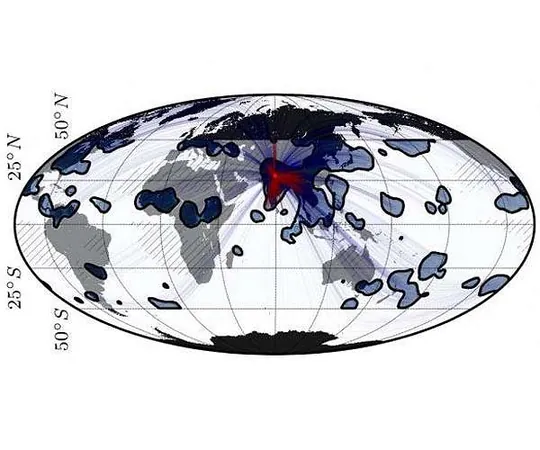
NASA Unveils Shocking Findings on How Rainfall Patterns Shape Global Vegetation Dynamics
2024-12-15
Author: Li
Introduction
In a groundbreaking study, NASA has revealed that the timing and intensity of rainfall may be just as crucial for plant health as the total amount of rain received in a given year. This revelation was published in the esteemed journal *Nature* on December 11, 2024, and sheds light on the complex relationship between rainfall variability and ecosystem stability across the globe.
Research Overview
Researchers from NASA's Goddard Space Flight Center, led by hydrologist Andrew Feldman, conducted an extensive analysis using two decades' worth of satellite data and field observations across millions of square miles, from the icy expanses of Siberia to the lush landscapes of Patagonia. What they found was both fascinating and alarming: fluctuations in daily rainfall patterns significantly impacted how plants and crops fared in various environments.
Regional Findings
In regions experiencing less frequent but more concentrated rain bursts, such as the U.S. Southwest, vegetation thrived. However, this was not the case for humid ecosystems like those found in Central America, where plants struggled to cope with extended dry spells. According to Feldman, "We need to rethink our understanding of how rain affects plants. It’s like watering a house plant – the way in which you distribute that water makes all the difference."
Global Implications
The research indicated that a staggering 42% of the world's vegetated land is sensitive to daily rainfall variability. Surprisingly, over half of these areas showed increased growth during years marked by sporadic yet intense rain, including essential agricultural regions such as the Corn Belt. Meanwhile, broadleaf forests and tropical rainforests—especially those in the Indo-Pacific region—exhibited pronounced declines under these conditions.
Significance of Findings
Moreover, the study highlighted that the impact of daily rainfall variability is almost as significant as the total annual rainfall when it comes to global vegetative growth. This underscores an urgent need for farmers and ecologists to understand these dynamics, particularly in light of increasing climate unpredictability.
Methodology
NASA utilized advanced algorithms and a suite of satellite missions, including the Integrated Multi-satellite Retrievals for GPM (IMERG), to measure rain and snowfall rates globally every 30 minutes. They tracked plant health by analyzing “greenness” via the Normalized Difference Vegetation Index (NDVI) and monitored solar-induced fluorescence—a faint light emitted by plants during photosynthesis that serves as an indicator of their vitality.
Impacts on Carbon Cycle
Feldman emphasized the importance of these findings for the planet's carbon cycle, stating, "A deeper understanding of how plants respond to storms can improve our strategies for managing carbon emissions. Plants, including crops and forests, act as vital carbon sinks, absorbing excess CO2 from the atmosphere."
Conclusion and Future Work
In light of these pivotal revelations, scientists and policymakers must work together to adapt land management practices and agricultural strategies to align with evolving rainfall patterns. As climate change continues to reshape global weather phenomena, this study could not be more timely. The fate of our world's vegetation—and ultimately, our climate—hangs in the balance. Stay tuned as NASA continues to unpack the implications of their findings in upcoming research, highlighting the critical role these ecosystems play in sustaining life on Earth.




 Brasil (PT)
Brasil (PT)
 Canada (EN)
Canada (EN)
 Chile (ES)
Chile (ES)
 España (ES)
España (ES)
 France (FR)
France (FR)
 Hong Kong (EN)
Hong Kong (EN)
 Italia (IT)
Italia (IT)
 日本 (JA)
日本 (JA)
 Magyarország (HU)
Magyarország (HU)
 Norge (NO)
Norge (NO)
 Polska (PL)
Polska (PL)
 Schweiz (DE)
Schweiz (DE)
 Singapore (EN)
Singapore (EN)
 Sverige (SV)
Sverige (SV)
 Suomi (FI)
Suomi (FI)
 Türkiye (TR)
Türkiye (TR)